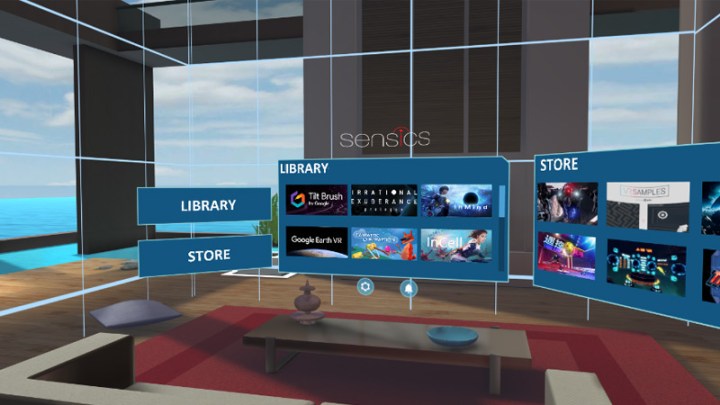
Digital boundaries, called Chaperone in the HTC Vive headset, and Guardian on the Oculus Rift, are an important addition to a VR headset, especially when it comes to room-scale movement. They provide a reminder of the physical limitations of your real-world space, without breaking immersion too much.
Announced at the Games Developer Conference, the OSVR’s new Protector boundaries were added by VR hardware developer, Sensics.
“An initial setup allows the user to define the safe play area,” Sensics said (via Toms Hardware). “The system then continuously monitors the user’s head and arm positions (using any available OSVR-supported sensors) and presents a warning grid when the edge of the play area is approached.”
More: Owners of older OSVR HDK headsets can now upgrade the screen with a special kit
Although it will work with the OSVR HDK2 headset that’s already available, Sensics claims that Protector should work with a number of OSVR supporting headsets. It operates as its own independent application that works alongside and as part of any other VR app that’s launched. It should work with small room spaces as well as much larger ones, we’re told.
In a similar manner to the HTC Vive’s Chaperone options, OSVR’s new Protector system can also can fade in a front-mounted camera feed, instead of using grid boundaries.
Alongside Protector, Sensics Home Suite also introduces a new Home Screen that acts as a launch hub for VR software. Visually, it’s an ocean facing a living room of sorts. It gives you an in-VR place to open applications, install new apps, receive notifications from apps and other users, and more.
More commercially, Home Suite also introduces ads and sponsorships, so there’s the possibility that future iterations will see certain brands heading up particular sections of the Home Suite. They can be targeted to geographic location and user preferences, we’re told.
Perhaps somewhat invasively, Home Suite ads may also leverage heat-mapping to know just where users are looking so it can put ads right in your field of view.




